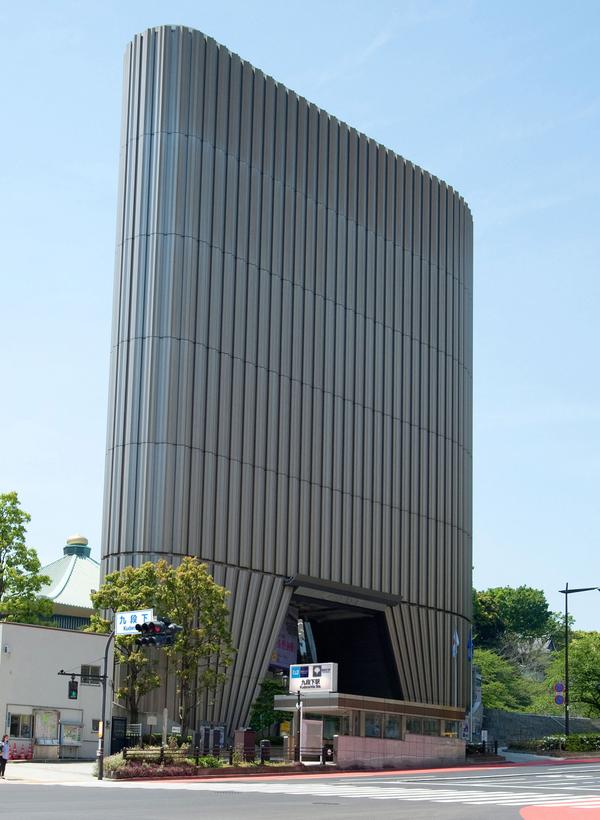
The National Showa Memorial Museum, better known as the Showakan, is located at 1 Chrome-6-1 Kudanminami, Chiyoda City, Tokyo 102-0074. It is a one-minute walk from Exit 4 of Kudanshita Station on the Tozai Line.
Architect/designer: Kiyonori Kikutake
Management: the Ministry of Health, Labour, and Welfare
The museum was constructed to “commemorate the hardships” of regular Japanese people during and after World War II. This sense of “everyday life” and “day-to-day” struggles is clearly shown in each exhibit.
Phone number: +81 3-3222-2577
Open hours: 10:00-17:30 on Tuesdays-Sundays
Closed: Mondays and New Year’s Day
Adult Admission: ¥300
College Student Admission: ¥150
Museum tour
The Showakan portrays a strictly Japanese point-of-view of World War II. Families of Japanese soldiers aided the creation of this memorial telling how the war affected the Japanese homefront by displaying personal objects and stories of Japanese citizens. Exhibits are mostly displayed in the Japanese language, with some English translations, to preserve the Japanese culture. By doing so, the Showakan fosters group identity and culture when visitors are able to relate to past generations through spoken and written language. Communication between generations is essential for passing down traditions, beliefs, and values.
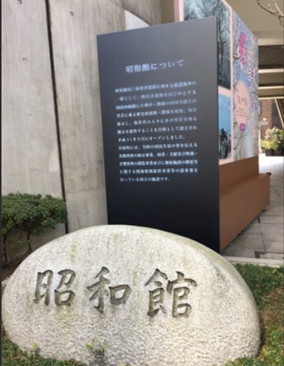
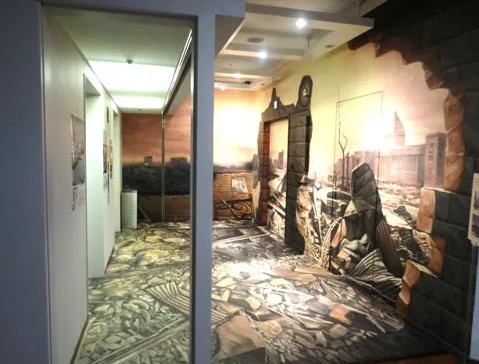
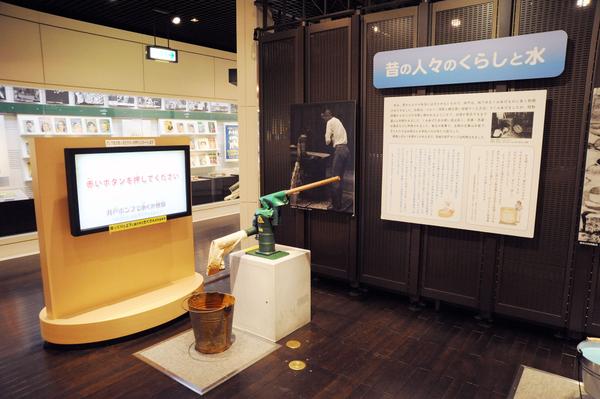
The 1st floor is the main entrance where general information can be found while the 2nd floor is designed as the evacuation site of Chiyoda City. The 3rd floor hall has space for school groups to meet and occasionally displays special exhibits.
The 4th floor is a library containing a wide range of literature. The books, magazines, newspapers, etc, represent the citizens and public’s lifestyles during the war (Showa-kan: We, (n.d.)). There are also reference materials that can be used for research purposes. This collection of reading materials were collected from Japanese civilians, therefore, the majority of the displayed media are written in Japanese.


The 5th floor houses an Audio Visual Room consisting of photographs, newsreels, and music. These records provide visitors with the necessary tools, such as imagery and sounds, to imagine the scene of mainland Japan during the wartime.
The 6th and 7th floor exhibits display thousands of household items including, but not limited to, letters, clothing, and appliances/furniture. These items pass on stories of the Japanese homefront during and after World War II to future generations and visitors to the museum.


War history
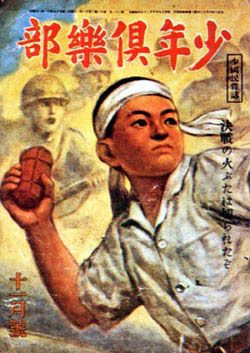
In pre-World War II Japan, there was a law for young males to get physical examinations at the age of 20. The healthy men were expected to serve Japan in its army. When the war began, a sense of nationalism was sparked in all generations, including the youth. Boys were taught martial arts and girls learned to fence. Magazines, such as Boy’s Club, provided information about the war. (Showa-kan: We, n.d.)
At the time, military service was the norm. It was also common for “little nationals” – that is, children – to play soldiers instead of tag.
Post-World War II, electrical appliances became commonplace in households. Radios and irons were the top two most popular objects. Some of the older versions of refrigerators, televisions, and washers are also housed in the museum and are pictured to the right. As Japan was recovering, culture became the main focus. The Japanese people were building up their nation again and focused on creating a national identity. The Showakan helps maintain this culture by displaying common household items such as these to remember the difficult times during the war when the public had to come together as a nation. The public were victims of the war and this belief is evident in the museum.


The museum also exemplifies that war is wrong because it destroys countries and people. During the war, the Japanese public had to ration food and give the military anything containing metal while families had to send their sons and fathers to war (Showa-kan: We, (n.d.)). For example, in the picture of the iron to the left, the caption mentions that items usually made with metal had to be manufactured using other materials, like ceramic, during wartime. Again, by displaying objects relating to the war, the Japanese homefront struggles caused by war are prevalent. Not only were the soldiers affected, but the citizens were as well. The nation can move on from the war to peace.
Museum background
The Showakan was intended to be Japan’s first national war museum and memorial for the war dead. However, just as war memory controversy occurs between nations, it can also occur within a nation (Saito, 2017). During the 1990s when the museum was being designed, the public’s view of World War II was changing. The revisionist views, reflecting a sense of responsibility for Japan’s aggressive roles in the war, were gaining a voice (Benfell, 2002). The government originally designed the museum to include exhibits on Japanese colonization and comfort women to enhance these revisionist ideas (Kishimoto, 2004). These designs were discarded when the voices raised the fact that the exhibits would incriminate the fallen soldiers.
The National Showa Memorial Museum officially opened in 1999 after much debate between the government and the public causing a delay in construction (Kishimoto, 2004). The museum was built to honor the wishes of the Japanese public in a self-serving perspective with little regard for other nations and their losses (Saito, 2017). By focusing on the lives of the Japanese public instead of the events of the war, the museum portrays a victimized standpoint. This type of war remembrance has the potential to trigger other nations and prevent the creation of a collective war memory between nations (Saito, 2017). In order to balance this apolitical and ahistorical standpoint, the Asian History Document Center was tasked with the implementation of Japan’s role as an aggressor during the war (Kishimoto, 2004).
References
- Benfell, S. T. (2002). “Why Can’t Japan Apologize?” Harvard Asia Quarterly, 6 (2), 4–11.
- Griffiths, O. (2007, September 22). “Militarizing Japan: Patriotism, Profit, and Children’s Print Media, 1894-1925.” Retrieved May 11, 2020, from https://apjjf.org/-Owen-Griffiths/2528/article.html
- Hein, L., & Takenaka, A. (2007, July 12). “Exhibiting World War II in Japan and the United States.” Retrieved February 12, 2020, from https://apjjf.org/-Laura-Hein/2477/article.html
- Kishimoto, K. (2004). “Apologies for Atrocities: Commemorating the 50th Anniversary of World War II’s End in the United States and Japan.” American Studies International 42 (2/3), 17-50. Retrieved May 11, 2020, from www.jstor.org/stable/41280073
- National Showa Memorial Museum. (n.d.). Retrieved February 11, 2020, from https://www.japan.travel/en/spot/1720/
- National Showa Memorial Museum, Chiyoda. (n.d.). Retrieved May 11, 2020, from https://www.tripadvisor.com/Attraction_Review-g1066443-d1992258-Reviews-National_Showa_Memorial_Museum-Chiyoda_Tokyo_Tokyo_Prefecture_Kanto.html
- Saito, H. (2017). The History Problem: The Politics of War Commemoration in East Asia. Honolulu: University of Hawai’i Press. Retrieved May 11, 2020, from www.jstor.org/stable/j.ctt1wn0r56
- Showa-kan: Kudanshita. (n.d.). Retrieved May 11, 2020, from https://whereintokyo.com/venues/25404.html
- Showa-kan: We convey the life of Japanese during and after the World War II . (n.d.). Retrieved May 11, 2020, from https://www.showakan.go.jp/pdf/showakan_en.pdf